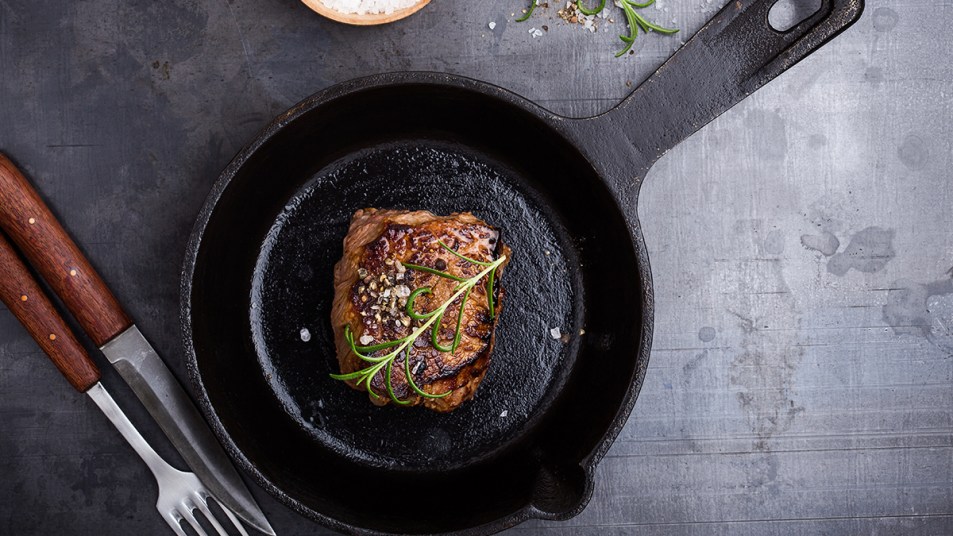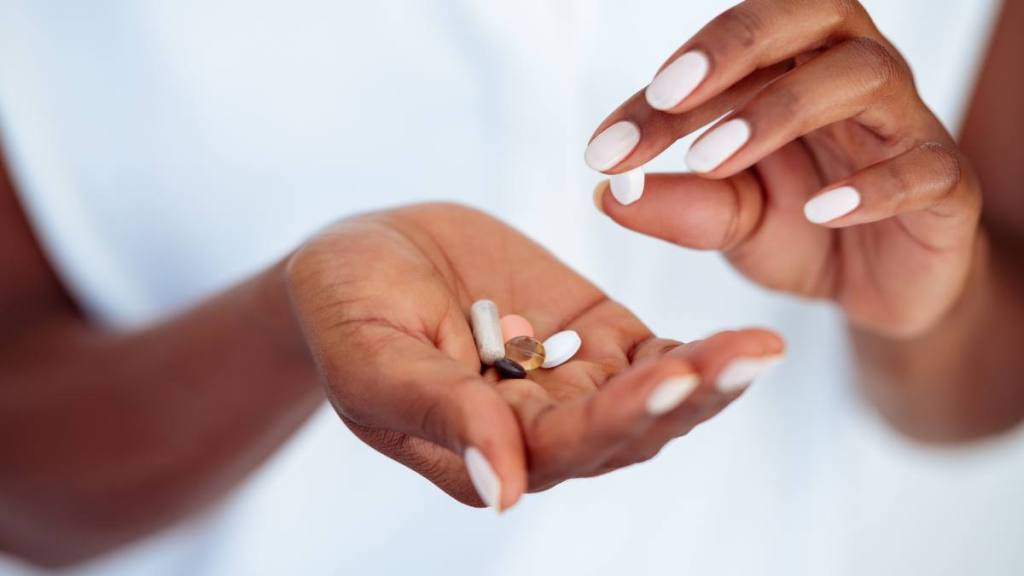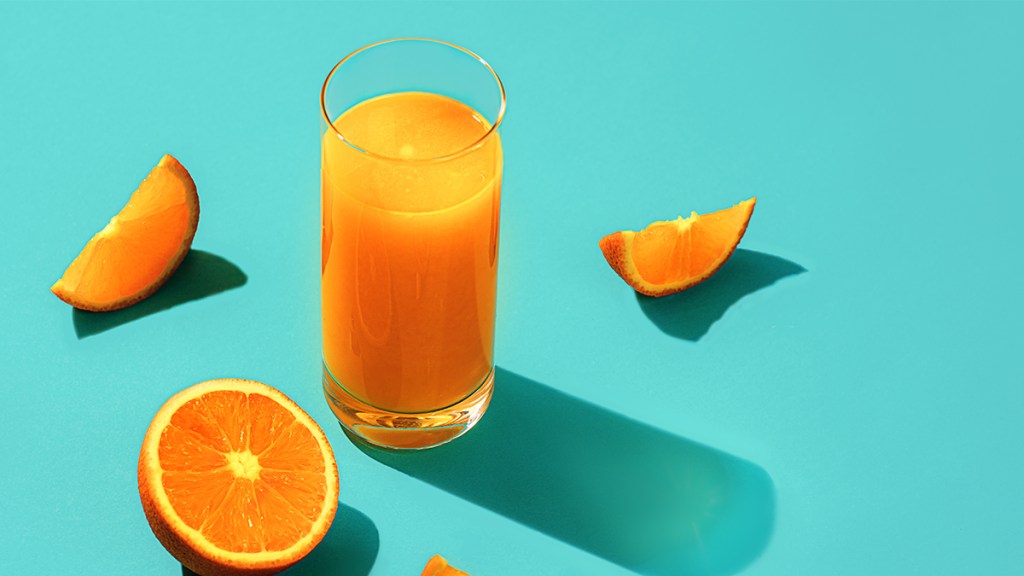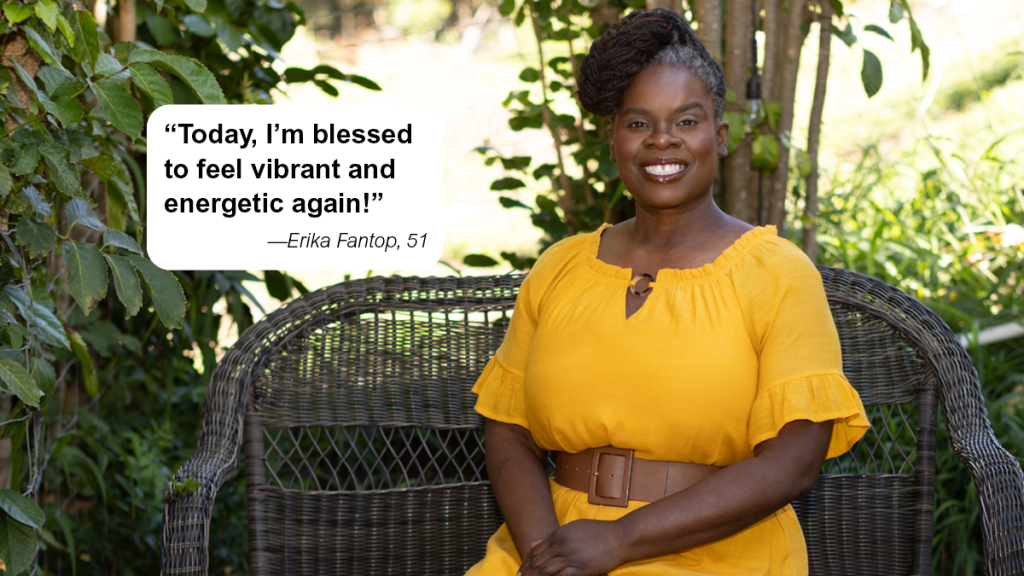Study: 65% of Postmenopausal Women Are Deficient In Iron — How to Restore Your Levels & Your Energy
Hint: Sipping this juice increases iron absorption by 300%

From taking care of loved ones at home to taking care of business at work, women are used to going nonstop all day. But if you’re feeling too exhausted to tend to everything on your plate, you may need more iron. The mineral is essential for maintaining energy, optimizing mood and more. But Columbia University research suggests draining iron deficiencies impact far more women than previously thought. Erika Fantop was once one of them. In fact, she suffered from exhaustion due to iron deficiency for years. But with the help of iron rich foods and other simple strategies, she’s energized and upbeat today. Here’s how to tell if lifting your iron levels can revitalize you, too!
Why iron is essential for energy
“Iron is crucial for making the hemoglobin that transports energizing oxygen through the body,” notes Neal Barnard MD, founder and president of the Physicians Committee for Responsible Medicine. Plus, the mineral is vital for making thyroid hormone and the cellular energy fuel ATP. So when levels dip, women experience symptoms such as fatigue, brain fog, anxiety and more. And while the severe shortfalls that mark iron deficiency anemia are a well-known tiredness trigger, researchers in the American Journal of Clinical Nutrition say even marginal deficiencies can sap energy. But since symptoms of iron deficiency can mimic those of other conditions, misdiagnoses are common. As a result, women can suffer from draining deficits for years. (Click through for more on iron deficiency without anemia.)
What causes iron deficiency?
Many doctors consider low iron chiefly a problem that impacts women of childbearing age, since menstruation and pregnancy can reduce iron levels. But a Journal of Nutrition study notes women of all ages can suffer shortfalls. And in a separate study, 65% of postmenopausal women were iron-deficient. Among the factors that can lower iron levels:
1. Diets that lack iron rich foods
The NIH recommends women aged 19 to 50 get 18 mg of iron a day from their diets. Women 51 and older should aim for 8 mg daily. Meat, fish and poultry are naturally high in iron, as are beans, nuts, seeds and certain fruits and vegetables. But the processed foods that abound in modern-day diets can crowd out natural iron sources. The result: Iron intakes can drop by 50%. Weight-loss diets can also omit iron rich foods. In fact, a report in the Electronic Journal of Medicine found iron deficiency was 57% more likely in women who went on restrictive diets.
2. Common medications
Overuse of nonsteroidal anti-inflammatory drugs (NSAIDs) can lead to gastric bleeding and iron losses, notes Dr. Barnard. Indeed, a study in the journal Alimententary Pharmacology and Therapeutics found that taking NSAIDs such as ibuprofen and naproxen daily for 20 months significantly increased the odds of developing iron deficiency. Acid-suppressing drugs can also prove problematic, since the body relies on gastric acid to break down iron rich foods so their iron can be efficiently absorbed.
3. Medical conditions
Blood loss associated with gynecological concerns can sap iron levels. In fact, a study in the journal Current Developments in Nutrition determined women with endometriosis were 46% more likely to develop iron deficiency than those who didn’t suffer from the condition. And a report in the American Journal of Obstetrics and Gynecology found a similar increase in risk among women with uterine fibroids.
What’s more, scientists in the journal Gastroenterology note that Crohn’s disease and ulcerative colitis can reduce the ability of intestinal cells to absorb iron. And a study in Annals of Gastroenterology found that iron deficiency impacts up to 80% of Crohn’s disease and ulcerative colitis patients.
Another problem: The chronic inflammation that marks arthritis can increase levels of a hormone called hepcidin, according to findings in the Journal of Laboratory Physicians. As study authors explain, hepcidin can blunt absorption of iron.
Do you need more iron?

Doctors diagnose low iron levels with the aid of blood tests. Dr. Barnard recommends asking for a serum ferritin test that measures stored iron. If results reveal an iron shortfall, doctors may conduct additional tests to rule out causes of GI bleeding. Telltale symptoms can also indicate deficiency, so see your doctor if you experience the following:
- Fatigue
- Muscle weakness
- Headache
- Dizziness or lightheadedness
- Cold hands and feet
- Sore or inflamed tongue
- Brittle nails
- Cravings for non-foods (like ice or dirt)
- Anxiety or blue moods
Easy ways to outsmart iron deficiency
Iron shortfalls that are left untreated can progress to iron deficiency anemia and damage the organs. But increasing iron levels with the following strategies can prevent such problems and ease draining symptoms of iron deficiency in as little as two weeks.
1. Enjoy iron rich foods
Many doctors advise eating food sources of iron such as beef, poultry and organ meats to lift levels of the mineral. But Dr. Barnard recommends filling up on iron rich foods such as beans and leafy greens. “Plants carry iron in a special form called non-heme iron, which is more absorbable when your body is low in iron and less absorbable when your body has plenty of iron already,” he explains. “That’s important, since iron can be harmful if you get too much of it.” Indeed, iron overload can trigger many of the same symptoms associated with iron deficiency.
2. Be savvy about supplements

Supplementing with iron is also key. But to avoid excess, it’s important to work with your doctor to determine the right dose. And when supplementing, consider choosing a product that contains an iron amino acid chelate. Also known as iron glycinate or iron bis-glycinate, studies show it’s more readily used by the body than other iron forms.
3. Add vitamin C to your iron-boosting regimen

Dr. Barnard advises pairing iron rich foods with vitamin C-rich fare such as citrus fruits, apples and broccoli. And with good reason: Vitamin C is a “powerful enhancer” of nonheme iron absorption, say experts in the Annals of the New York Academy of Sciences. Plus, a study in the American Journal of Hepatology found taking an iron supplement with orange juice increased absorption of the mineral by 300%. But coffee and tea can inhibit iron absorption by up to 64%, as can dairy foods and beverages. That’s why experts advise enjoying them two hours after eating iron rich foods or taking supplements.
Iron deficiency success story: Erika Fantop, 51

I hope this doesn’t cost me my job, thought Erika Fantop when her supervisor explained that Erika’s work was suffering because she was so fatigued and disoriented. “My supervisor said I needed to find a way to boost my alertness and energy once and for all,” Erika recalls. “But I didn’t know how!”
Erika was tired all the time
“My lifelong struggle with anemia, a lack of red blood cells that leads to reduced oxygen flow to the body’s organs, had left me struggling to stay energized and alert since my teens. Over the years, doctors had tried everything. I took birth control pills to normalize my monthly cycles and various ferrous sulfate supplements to boost my iron levels. But side effects like nausea and abdominal upset prevented those from being long-term solutions.
“A nurse, my mom had always researched natural remedies and herbs to ease my exhaustion.
Searching for answers
“So when she encouraged me to change my diet and begin eating more meat and dark, leafy greens to increase my iron levels, it sounded like a good option. The allergy tests indicated I was allergic to most animal protein. I had to find more vegan or vegetarian sources of iron. My doctor suggested biweekly iron infusions to help boost iron levels, which helped a bit but were costly both in time and financially.
“When I turned 46, my periods became even heavier, worsening my anemia and exhaustion. That left me unable to remember chunks of time due to being tired and having low energy. It was impossible to get through my workdays as a deli manager and apprentice midwife.
“Things were the same at home where, as the mother of five and grandmother of one, I lacked stamina to keep up with my family. I always felt fatigued and disoriented, struggling to stay ‘on’ to enjoy meals and other family time.
“Frustrated that I was unable to maintain a robust work and home life, I felt guilty I wasn’t fully present for my family. Trapped in a vicious cycle of exhaustion and guilt mixed with fear for my livelihood, hopelessness blanketed me.
A simple solution
“About two years ago as I navigated perimenopause, I changed doctors. I saw an ob-gyn who ordered blood tests to check my iron and ferritin levels. Then he recommended I try supplementing with Blood Vitality (available at Amazon.com). He explained that iron is an important mineral present in red blood cells that carries oxygen to cells in the body. Ferritin, on the other hand, is a protein that stores iron and releases iron when the body needs it. And because the two supplements work together, being deficient in either can cause fatigue. He said the supplement contained a controlled, gradually released form of iron mixed with amino acids to promote greater absorption of iron without unwanted side effects.
Energy — restored!
“Figuring I had nothing to lose, I followed my doctor’s advice. I started taking two capsules in the morning and one in the evening. I was shocked that on the second day of this regimen, I enjoyed a dramatic increase in my energy. I could do things I hadn’t felt like doing for years. I felt invigorated and able to power through my day.
“With guidance from my physician, I was eventually able to taper down to two capsules daily. After a few months my iron and ferritin levels increased significantly. Now I take just one capsule daily to maintain my iron, ferritin and energy levels.
“With continued use, my brain fog lifted, and I no longer had lapses of lost time because I was so out of it. Best of all, I didn’t have any unpleasant side effects like mood swings from birth control pills or the nausea and constipation I experienced with other iron supplements.
“Today, I’m so blessed to feel vibrant and energetic again! Nothing can stop me now!”
This content is not a substitute for professional medical advice or diagnosis. Always consult your physician before pursuing any treatment plan.
















